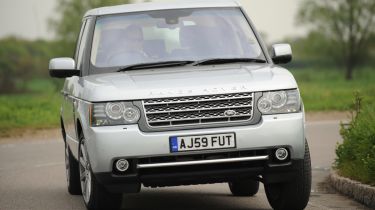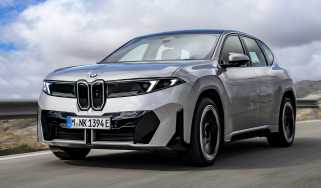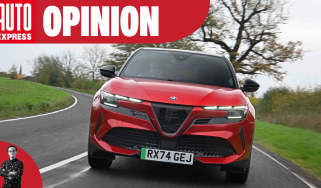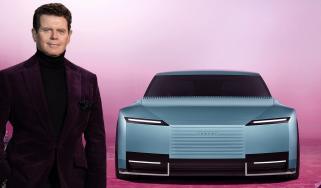Range Rover (2002-2012) review
The flagship Range Rover is the world's's best off-roader, and boasts a limousine-like drive, lots of space and imposing looks

The Land Rover Range Rover is the ultimate SUV. It combines Bentley levels of interior opulence with a luxury limo-style driving experience, yet offers incredible off-road ability. Latest versions get an uprated diesel engine which is quick and smooth but running costs are still very high whatever the engine. All models have a fantastic image and are extremely desirable.
Engines, performance and drive
The only sensible choice when it comes to Range Rover engines is the latest 309bhp 4.4-litre V8 diesel. It has a super smooth eight-speed automatic gearbox, does 0-60mph in 7.5 seconds – not bad for a car that weighs close to three tonnes – and has even more torque than the 503bhp 5.0-litre supercharged V8 model, so it's even quicker in gear. If you have an oil well at your disposal the V8 might be worth a look - it makes a lovely noise - but really the diesel is so quiet and rapid, you'd be a fool to ignore it. Given that the Range Rover is one of the world's best off-roaders, it is astonishingly good on the road too. Adaptive air suspension keeps body roll in check and there's quite a lot of grip too. It's not sporty like a Porsche Cayenne, as the steering is light and a little vague, but the Range Rover is brilliant at soaking up bumps and dispenses long distances with ease. Motorway road noise doesn't really enter the cabin and the only cause for complaint is the wind noise created by the bluff shape at high speed.
MPG, CO2 and Running Costs
Unfortunately, you can't run a Range Rover on a budget. Far from it. Even the diesel emits 253g/km of CO2, while the V8 petrol emits 348g/km, so you'll need deep pockets for the road tax alone. The latter has an eye-watering thirst for fuel with buyers unlikely to get much more than 19mpg in regular driving. The diesel is much better and actually returns 30mpg combined but a BMW X5 is still a more informed choice for those concerned with running costs. On top of this, servicing bills and day-to-day maintenance will be very expensive – those big tyres don't come cheap – and despite the desirability of a Range Rover, residual values are not very strong. As for equipment, 'standard' Vogue models get cruise control, a CD changer and Bluetooth. Autobiography specification comes with everything you can wish for, although there are plenty of options too.
Interior, design and technology
There is no more imposing vehicle on the road than the Range Rover. Its traditional boxy shape has been evolved over the years, and the latest model is the best-looking yet with huge, jewel-like front lights, a floating roofline and trademark features such as the split tailgate at the rear. It is more desirable than rivals like the Mercedes GL Class and cabin quality is superb - with big chunks of wood and metal as well as soft leathers throughout. All the buttons and stalks feel weighty and of high quality, too.
Practicality, comfort and boot space
The best thing about the interior is the driver's seat, which is raised to give you a magisterial view out. There is loads of space up front and neat features like the digital dashboard and a dual-screen on the centre console that allows the driver to look at sat-nav instructions while the passenger watches a film. It measures nearly five metres long – almost the same as a Mercedes S Class – but the Range Rover doesn't quite have as much room in the back as a regular limo. That said, there is still ample room for three tall passengers. Open the split tailgate and you will be greeted by a huge load area – 994 litres with the rear seats in place which extends to a van-like 2,099 litres with the rear bench folded down. Along with four-wheel drive, the Range Rover also gets Terrain Response – a clever system that manages the traction and stability controls, plus the brakes, gearbox and suspension, to offer a variety of different modes for tackling streams, rocky paths or steep descents. The Range Rover has the kind of true, go-anywhere ability a Mercedes GL or Porsche Cayenne Turbo can only dream of.
Reliability and Safety
With all that metal around you, the Range Rover feels like a very safe place to be and it has lots of equipment to back that up, including seven airbags, electronic brakeforce distribution and stability control. Laminated side glass also features. As for reliability, the Range Rover didn't have a great reputation in the past, but Land Rover has worked hard to fix faults and improve longevity. The brand place a respectable 20th in our 2012 Driver Power survey, putting it in the middle of the pack - and despite the complexity of the Range Rover, it's should be at least as dependable as a Porsche Cayenne or Mercedes GL.



